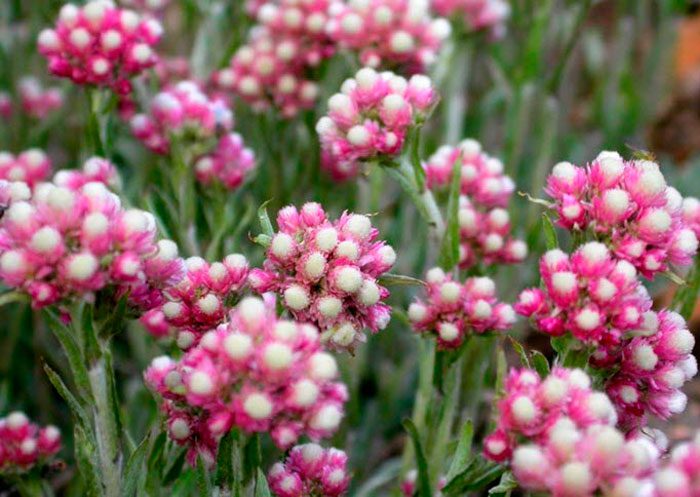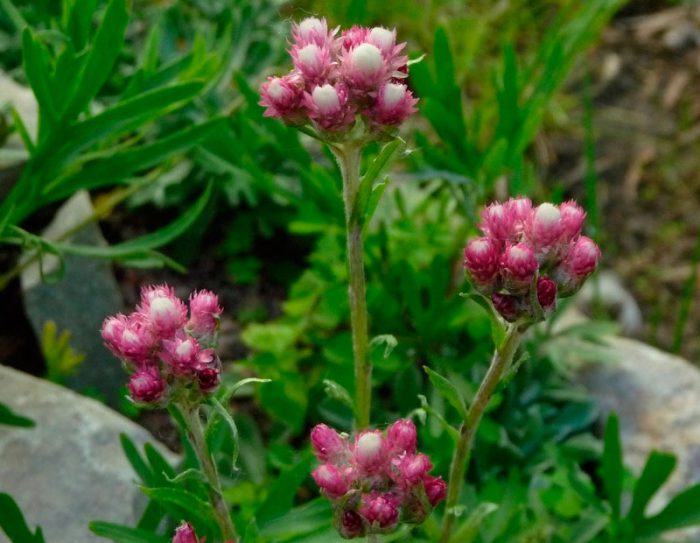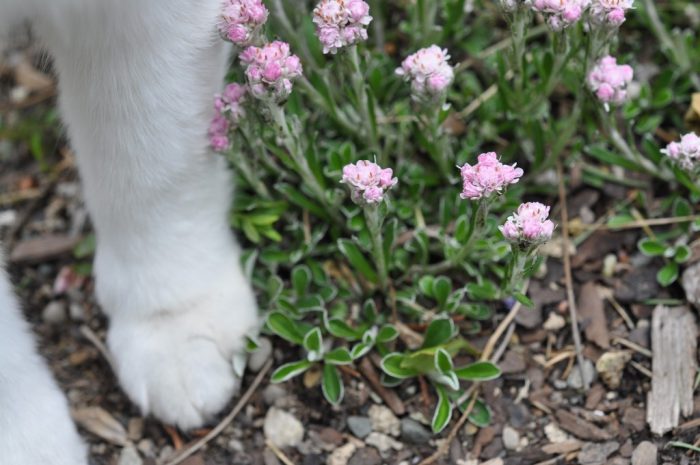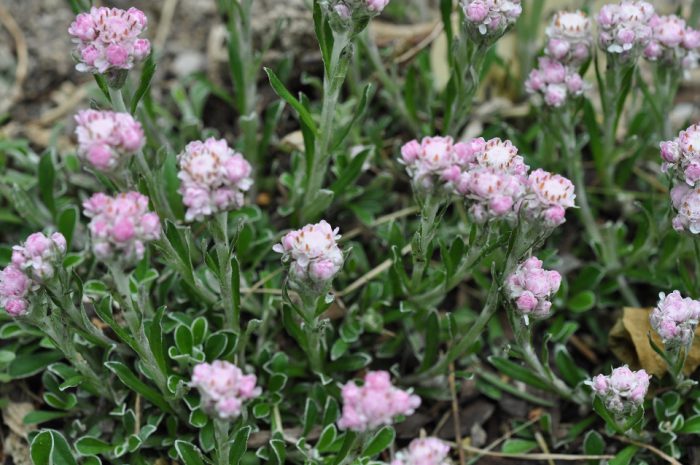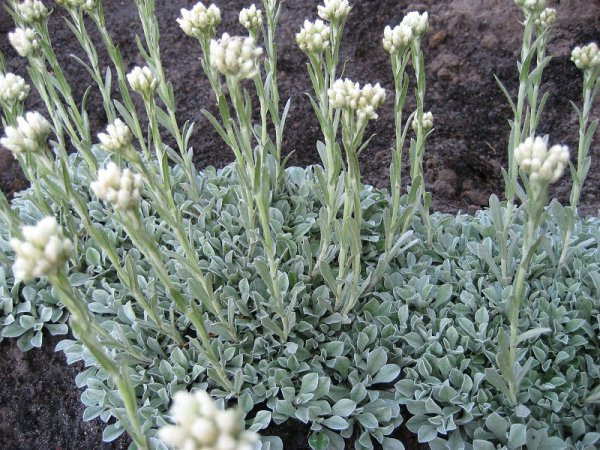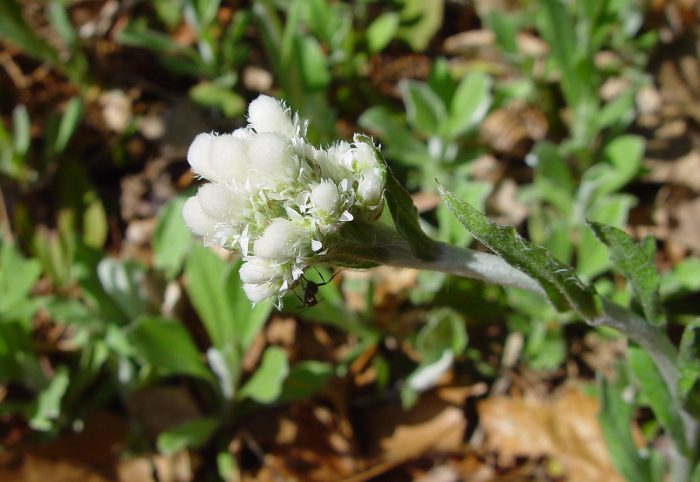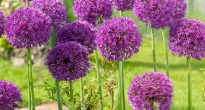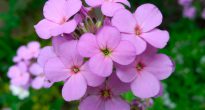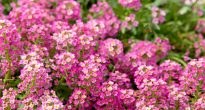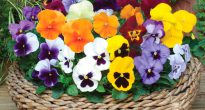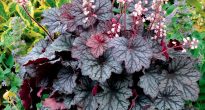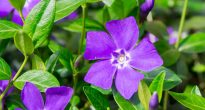Antennaria - a beautiful and unpretentious garden plant. It has won the hearts of many flower growers due to its unpretentiousness and endurance. Antennaria perfectly withstands frosts, does not freeze in winter. In addition, this plant is almost impossible to trample, and it looks great, like a flower pillow in the garden. Antennaria is popularly known as a cat's paw. She got this name thanks to the buds. When they fade, they look like the soft and fluffy legs of a cat. A carpet of cat's feet will compete with finicky lawns. Nondescript flowers do not lose their attractiveness over a long period.
The antenna looks modest and graceful. Its size does not exceed 30 cm. This discreet plant perfectly adapts to the arctic and alpine conditions of North America and Eurasia. Grows in pine forests, dry meadows, wastelands. It can be found on sunny edges, sandy shores of water bodies. Small flowers of antennae, mostly white and pink, form thyroid inflorescences. The cat's foot has creeping rooting shoots. Flowers form dense thickets, similar to a carpet. The flowering period is from May to July. After that, smooth fruits with seeds are formed in August.
Antennaria is planted in places where nothing can be grown. This ground cover plant is good at clogging weeds. It can grow among sand, stones, calmly endure heat. Flowers will decorate the spaces between stones and slabs. The fluffy rug looks great on the playground. Moreover, it will not suffer from small legs. Cat paws will look great in rockeries and alpine slides, complement heather plantings, and will be a good border. Antennary fixes compositions in misborders. Cat paws look beautiful in dry bouquets. They also have medicinal properties.
Content
Antennaria care - cat's paw
The antenna does not require any special maintenance. All care comes down to weeding at the beginning of planting.
A place
For a cat's foot, it is best to choose a sunny and dry area. In the shade, it will grow poorly. If you plant it in partial shade, it will adapt, but the bushes will stretch too far and fall apart.
The soil
Flowers are best grown on poor, slightly acidic, sandy soil. If you plant the antennae in fertile soil, it will stretch out a lot.
Watering
Cat's feet tolerate drought well, but flowers need regular watering and moderate humidity. The flower does not tolerate overflow. The plant feels comfortable in a dry place.
Reproduction. There are several options for breeding antennae. One of them is the division of the mother bush. This procedure can be carried out both in early spring and late autumn. Thanks to division, you can get not only "babies", but also rejuvenate the plant. In order for the cat's legs to grow well and delight with their beauty, they must be regularly rejuvenated (every 2-4 years). Old bushes lose their attractiveness, the flower carpet is thinning.
Also, cat legs reproduce by cuttings of creeping shoots that have taken root over the season. In late autumn, you can divide the rhizome.
The most difficult way to propagate antennae is with seeds. Seedlings are grown under glass. The seeds give too small shoots, develop poorly. In open ground, seedlings are planted in the summer, adhering to an interval of 20-30 cm. It will grow quickly, but will bloom only two years after planting.
Pests, diseases
The worst enemies of cat paws are aphids, spider mites, caterpillars. The most common diseases are spotting, rot, powdery mildew, rust, nematosis.
Types of Antennaria with photos and names
Antennaria belongs to perennial herbaceous plants (sometimes dwarf shrubs are found). There are about 50 species in the genus. 10 species grow in Russia. Some of them can be found in the Red Book.
Alpine antenna
A perennial ground cover plant that creeps along the ground and forms lush bushes. Its height is about 15 cm. It has gray leaves and small pink-purple flowers. Peduncles are collected in racemose inflorescences. Each cluster has about 2-5 inflorescences. A plant of this species begins to bloom in June and ends in August. The ideal conditions are poor, gravelly mulched soil. If you plant it in a well-lit area, dense clumps are formed.
Antennaria dioecious
The most common and popular type in garden plots. Its natural habitat is river terraces, open slopes, forest edges. Peduncles reach a height of 10-30 cm. It has a thin rhizome with numerous shortened, recumbent vegetative shoots, a straight stem. This species has small pink or blue flowers. The alternate leaves are glabrous above and have a grayish-green tint, white-tomentose below. A low-growing plant forms sprawling bushes. It begins to bloom in May. The period of abundant flowering lasts two months. Then oblong, cylindrical fruits appear. These cat's legs do not need shelter for the winter, they are not afraid of frost. They grow on light, non-alkaline soils.
Antennaria plantain
A representative of perennial plants. Unlike cat feet, the other species is the tallest plant. Its height reaches about 40 cm. The species got its name due to the wide oval leaves, similar to plantain. This antennae grows rather quickly, drowning out stunted neighbors. Its distinctive feature is its unpretentiousness and frost resistance. You don't need to cover it for the winter.
Antennaria carpathian
A rare species listed in the Red Book of Ukraine. Plant height - 10-20 cm. Very similar to dioecious cat legs. But the peduncles have no leaves. Grows in the highlands of the Carpathians. Found in Slovakia, Poland, Ukraine, Romania.
Despite their modest appearance, the cat's legs are quite attractive. They can be planted in a flower garden with poor soils. The silvery-green leaves of the antennae will make good neighbors of bulbous crops. You get a good mixborder composition when using yarrow, tenacious, purslane, lavender, cereals. You can't take your eyes off the fluffy rug of cat's legs with bells, mullein, wormwood. In addition, the plant is widely used in folk medicine.It perfectly heals wounds, stops blood, is a good choleretic agent.

